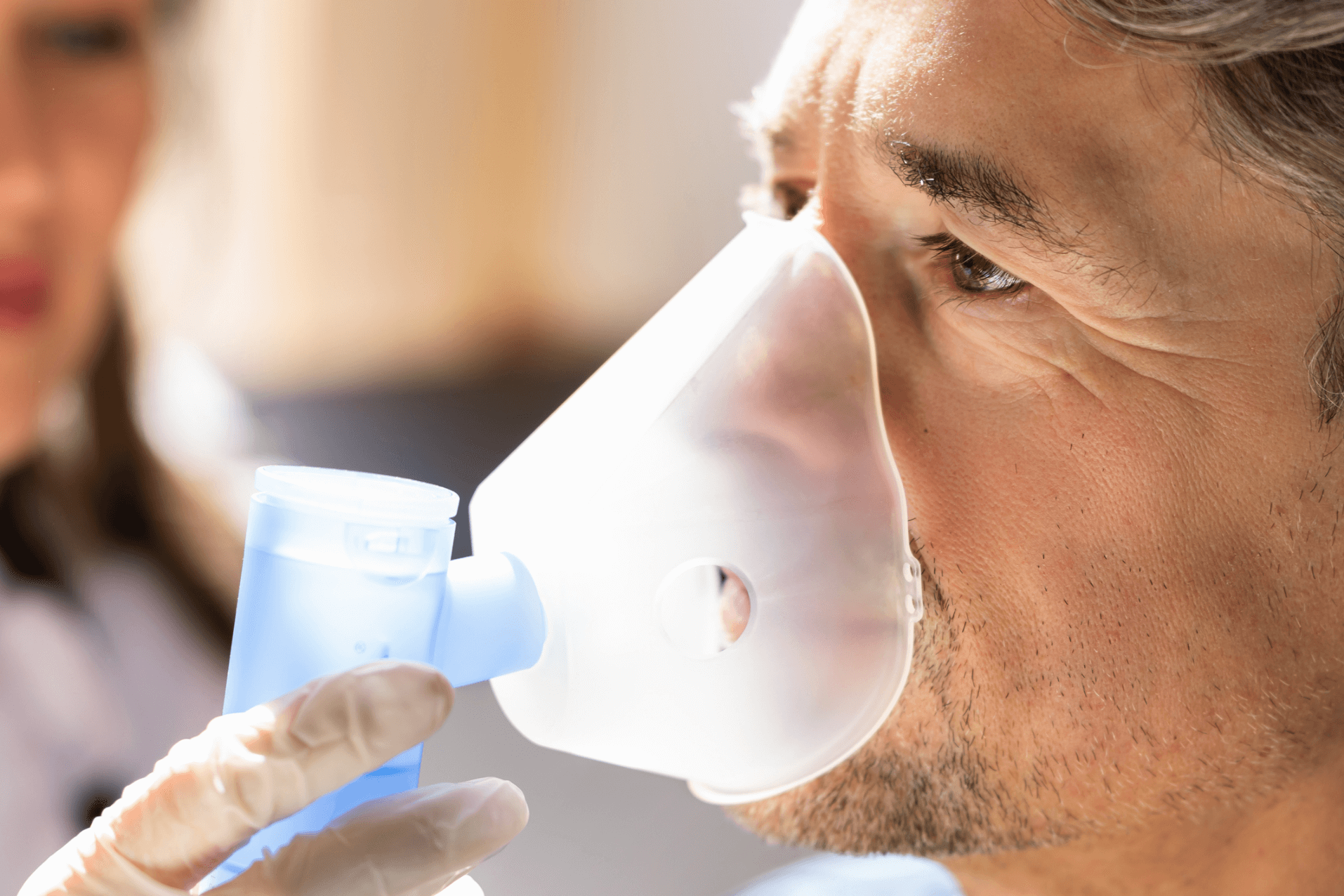Lung Diseases
Lung diseases (also known as respiratory conditions) are very common and can cause severe breathing difficulties.
If left untreated, lung diseases can significantly impact a person’s quality of life, overall health, and co-morbidities. The specialists at North Brisbane Sleep and Thoracic are highly trained sleep and respiratory physicians, experienced in caring for simple to complex cases. They utilise the latest treatment approaches to provide patients with the best possible treatment outcomes.

Types of Lung Diseases
A lung infection that causes inflammation in the lungs and is usually caused by bacteria or a virus. The inflammation leads to the air sacs in your lungs becoming filled with fluid.
A long-term lung disease caused by inhaling unsafe levels of silica dust (usually over a number of years) that can scar the lungs, leading to difficulty breathing.
A long-term lung condition where the walls of the alveoli (small air sacs within your lungs) are damaged, causing the lung’s small airways to collapse when exhaling.
Pulmonary Nodules
Idiopathic Pulmonary Fibrosis
Interstitial Lung Diseases
Pulmonary Hypertension
Rare Lung Conditions
Occupational Lung Diseases
Respiratory Lung Disease Overlap
Bronchiectasis
Respiratory Infections
Chronic Obstructive Pulmonary Disease (COPD)
Lung Cancer
Lung Disease Symptoms
Although some lung diseases may come with their own symptoms, here is a list of common symptoms related to most (if not all) lung diseases.
- Unexplained breathlessness: It’s normal to feel out of breath after exercise (whether a brief walk or weight training), however unexplained shortness of breath can be a sign of lung disease.
- Wheezing: This is often associated with difficulty breathing and usually sounds like a high-pitched whistling sound when you breathe (both inhaling and exhaling).
- Fatigue: Everyone feels tired after a long day of work or physical exercise which can be relieved after a good night’s sleep. But constant exhaustion is typically related to medical conditions, including lung disease.
- Persistent coughing: Most people will experience slight lingering coughs throughout their lives which is very common. However, persistent coughing that lasts for weeks at a time can be a sign of lung disease.
- Coughing up blood: No matter how much or how little blood you cough up, this is a sign of a health problem. If you experience this symptom, you should see your doctor as soon as possible.
- Chronic chest pain: Some chest pain is normal, as it can be caused by heavy lifting or swallowing a large piece of food, creating a temporary dull ache. But if you experience continuous unexplained chest pain, you may have a lung disease.
- Unintentional weight loss: Whether planned or unplanned, weight loss can be natural. You may be exercising regularly to lose weight, or have started eating healthier. But if there are no significant changes to your physical regime and you notice weight loss, this may be a sign of lung disease.
- Mucus production: Producing mucus can be caused by several factors that are not related to a medical condition, such as exercise, tobacco use, or certain foods like milk and chilli. However, you may have a lung disease if you are coughing up mucus for an unknown reason.
If you experience any of these symptoms, request a referral from your GP to North Brisbane Sleep and Thoracic. Our specialists can determine the severity of your potential lung condition and discuss treatment options with you.
Testing and Treatment Options
Testing
North Brisbane Sleep and Thoracic provides a wide range of lung function tests.
- Diffusing Capacity: Extremely useful test of how gas diffuses into lungs to aid in diagnosing various respiratory conditions, specifically ideal for identifying and monitoring emphysema.
- FeNO Testing: Non-invasive test that measures the amount of nitric oxide gas in a person’s breath. Useful for diagnosing asthma.
- Spirometry: Ideal for diagnosing and managing asthma and asthma-related symptoms through serial lung testing, as well as monitoring patients with COPD.
- Lung Volumes: A safe and non-invasive test to determine the total volume of air someone can inhale and exhale, as well as residual volume of air. Aids in diagnosing interstitial lung disease (ILD), fibrosis, hyperinflation, and gas trapping.
- Bronchoscopy: Used to assess respiratory issues and enables your doctor to visualise and sample the respiratory system. The procedure uses a flexible camera to look inside the airways.
Treatment:
- Zephyr Endobronchial Valves: Minimally-invasive endobronchial device for emphysema, consistently shown to be safe and effective for patients with severe emphysema.


When to See a GP
If you’re experiencing any of the above symptoms in a manner that is abnormal for you, book an appointment with your GP as soon as possible and request a referral to North Brisbane Sleep and Thoracic.
Prevalence of Lung Disease
Asthma and COPD are the two most common lung diseases in Australia. In 2020-2021, 11% of the population (2.7 million people) had asthma, while 2021 saw COPD as the leading underlying cause of death in Australia (4.1% of total deaths), affecting roughly 1 in 20 Australians over the age of 45. Silicosis, however, only affects roughly 500-600 Australians each year.
In Australia, pneumonia results in several hundred thousand GP consults every year and over 40,000 hospital admissions, making it the sixth leading cause of Australian deaths.
Contact us to book an appointment
Visit us at either our Clayfield or North Lakes locations and experience compassionate care in a comfortable environment, tailored to meet your unique needs.

